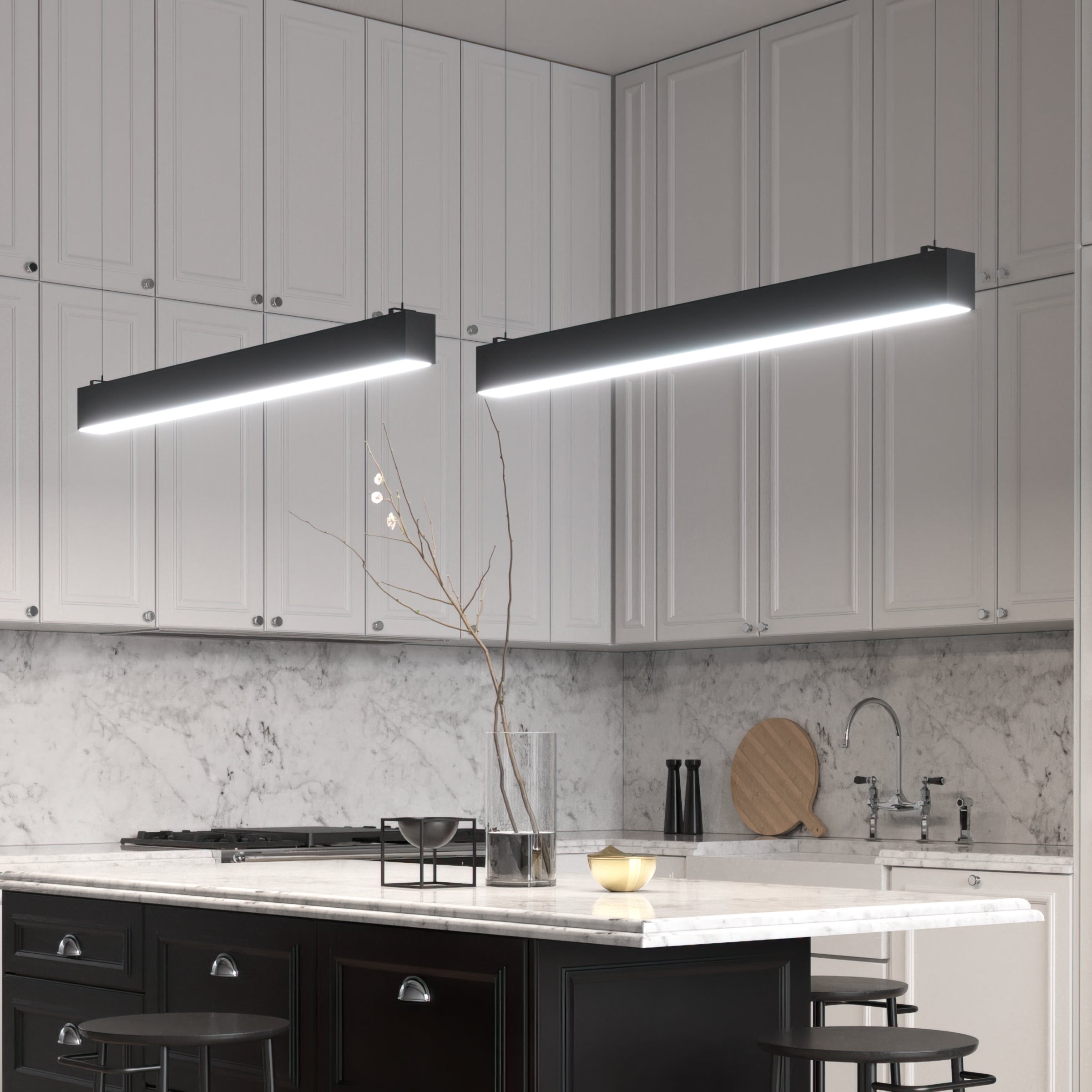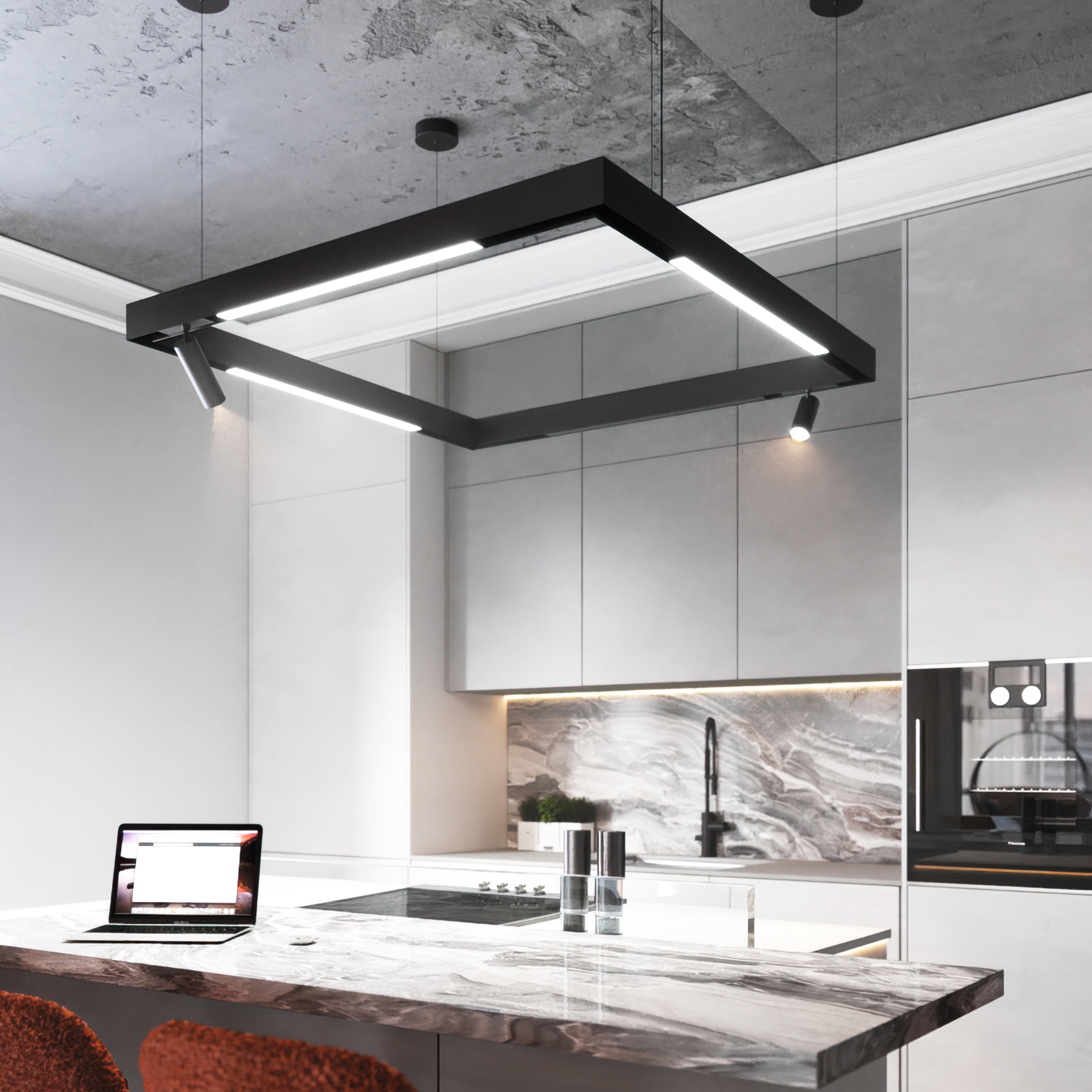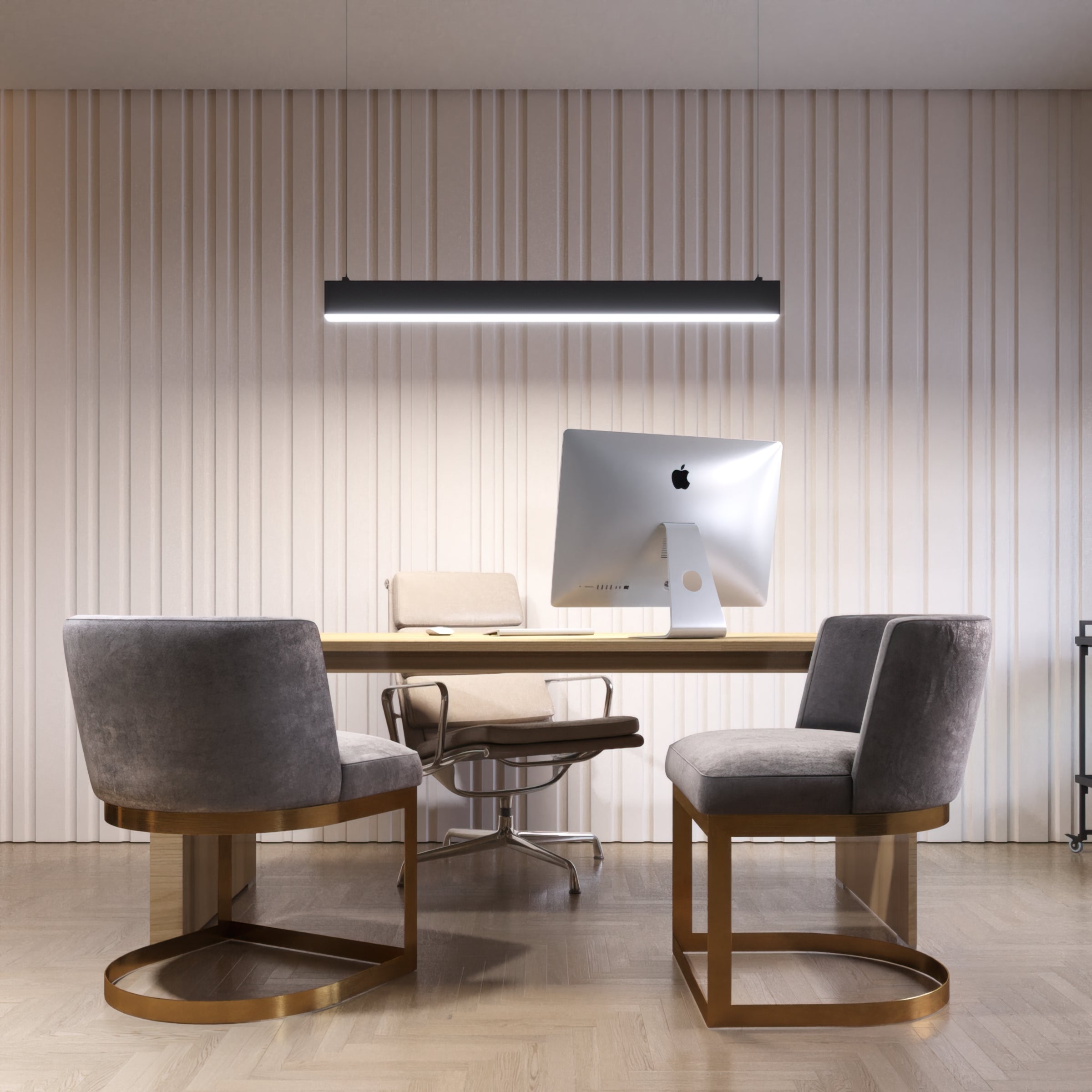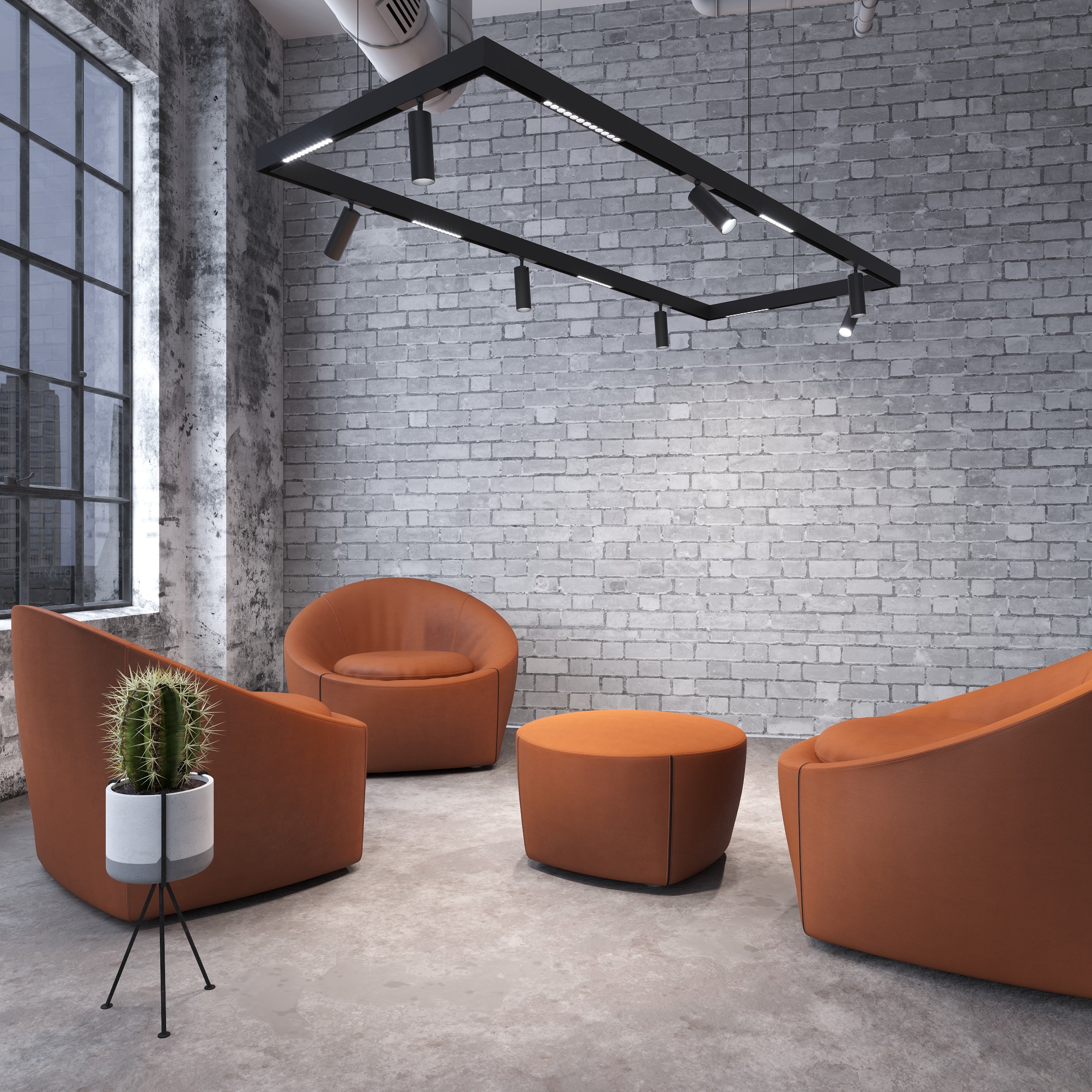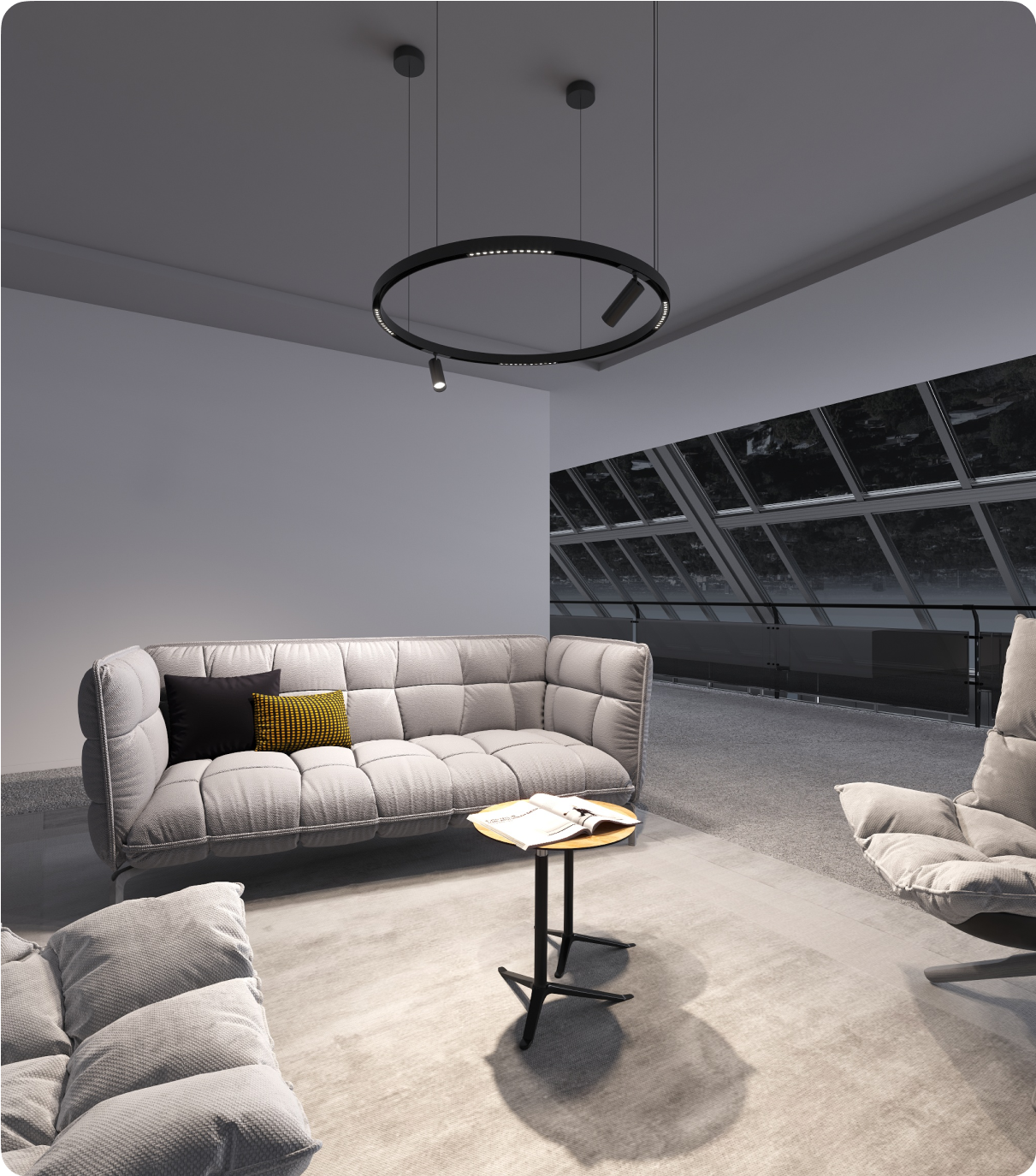Using track lighting for commercial buildings can be a great way to provide ambient lighting to different spaces and make them look more beautiful. Whether you are trying to give off a modern vibe or want something that will illuminate a large area, there are numerous types and styles of track lighting that can serve your needs well. Read on for everything you need to know about the different types and styles of track lighting out there.
What is Track Lighting?
Track lighting is a great option for commercial spaces like retail stores, showrooms and offices because it allows you to add illumination to high-traffic areas while keeping costs low. There are various types of track lighting that offer advantages to commercial spaces. They include:
- Tension wire track lighting: This system uses durable wires that hang from a ceiling and suspend lights or other decorations above your workspace.
- Cable track lighting: It uses a track that carries cable-connected lamp heads, providing uniform illumination and often excellent task lighting.
- Track lighting with plug in cord offers a flexible installation that can go on any surface (ceiling, wall, or track) as long as the cord reaches. This type is the most commonly used in commercial spaces because it allows you to customize your space by moving light fixtures around as needed.
- Wireless track lighting: This type of track lighting utilizes halogen or LED bulbs, but doesn't require traditional plug-in wiring. It operates in a wireless capacity by being directly connected to a power source.
- Magnetic track lighting systems: These systems use magnets instead of cords to suspend fixtures, making them easier on your walls and safer around pets or children.

Where to Use Track Lights
Track lighting makes a great addition to any space where you want clean, modern lighting. They can be used for the following:
General
When purchasing a track light for your architectural space, consider how you want to use it. Track lighting is one option for general lighting, with many different options available based on your specific preferences. For more general overhead lighting that illuminates the entire space, a wall track is usually more appropriate.

Wall-washing
Wall-washing track lighting directs light onto a wall, making it a great alternative to recessed lighting. This style is particularly popular in spaces where lighting enhances the atmosphere.
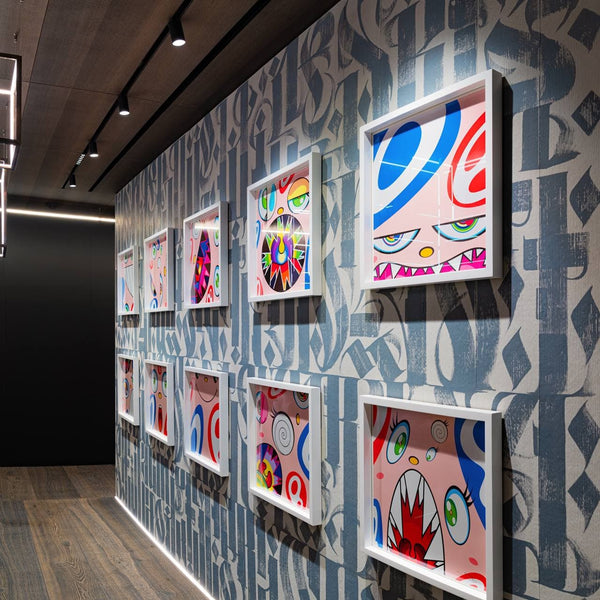
Accent
Accent lighting is a specific type of track lighting used to highlight a particular item or area. You can draw attention to a certain object with accent lighting, such as artwork on a wall or an architectural feature.

Task
A task light is a great lighting solution for small workspaces that need plenty of direct light to complete tasks like reading or crafting. They plug into an outlet directly, eliminating any risk from dangling cords.

Line-Voltage and Low-Voltage Systems
Track lighting with plug-in cords (low-voltage) makes it easy to turn on/off fixtures from a central location but doesn't typically allow for dimming. It is best for spaces that don't require precise control over how much light is emitted. Line-voltage track lighting systems are more customizable and tend to be used in more technically advanced spaces like offices or studios. They typically switch on each fixture, allowing users to create a customized lighting environment. Low-voltage systems can be connected to motion sensors or other automated devices via wireless technology. A line-voltage system will also typically have more power than its low-voltage counterpart, so lights may not flicker when turned on/off quickly. The downside: line voltage track lighting requires an electrical permit and can cost a lot.
Track Lighting System Types
Track lighting systems are a popular way to illuminate your home or office. These systems often include decorative fixtures that you can swap out at will. Some of the track lighting system types available include:
Fixed-Track
The fixed track features a track built into the ceiling or wall. This style has several benefits, including its simplicity, which means no wires are hanging down or getting tangled around your space. In addition, fixed track lighting tends to be affordable compared to other track lighting styles.

Swing Arm Track
Swing-arm tracks provide flexibility when positioning your lights. A swiveling track arm is the most common form. Swing arm tracks are typically flexible and can be mounted to walls in various ways. Many versions include an integrated switch that makes it easy to turn on and off; some even include a chain or rope for hanging light fixtures directly from the fixture's mount.

Linear (Standard) Track
The linear track is great for larger spaces because it allows you to place lights closer together while maintaining desired spacing between bulbs. In smaller spaces, however, the standard track can seem too overwhelming (and require a lot of floor space).

Flexible (Monorail) Track
The flexible (monorail) track is probably the most basic of all track lighting systems. These tracks can be easily adjusted because they have a tension system that allows you to move the lights in any direction. You unhook the clip holding it in place and adjust it as needed by sliding or bending it.

Cable Track
The cable track is the style that generally comes to mind when you hear the word track lighting. These fixtures feature thin wires (or cables) wrapped around a rail hung from the ceiling. The lights are then screwed directly into the cable.

Pendant Track
Pendant tracks come in various finishes, so you can choose the one that best matches your architectural design. You will probably find options with two or four arms; the latter is great for large spaces or open areas because it allows for more flexibility when installing lights.

Magnetic Track
As its name suggests, the track itself has magnets embedded, so you can easily snap the light onto it whenever you need to. It is simple and convenient since there is no hooking mechanism involved in installation — you have to make sure that your light is compatible with the magnetic track in the first place.

Track Lighting Head Types
There are various types of track lighting heads, and they include:
Heads
These are the fixtures that most people think of when they hear track lighting. They are what you see above, usually attached to a track mounted on the wall. Heads come in all shapes and sizes, with different features such as color temperature (hue), bulbs (bulb type), intensity settings, reflectors, etc. These heads allow you to position light where you want it. These heads also have accessories such as beams or gels to further shape the light or reduce glare.

Pendants
Pendants are generally the most decorative type. They are often meant to hang over a space where you need extra light that isn't directly overhead. Many pendant track lighting heads have movable arms so you can direct the light where it is needed instead of only having it hit the ceiling or one side of the space. You can also buy pendants with multiple head units (rather than one) to create different lighting patterns in larger spaces.

Track Lighting Track Types
Track lighting track types come in 3 main categories, they include:
H-style
An H-style track lighting system is a popular choice for do-it-yourselfers. This track usually comes as one unit that splits into two when it reaches the end of the track, which lets you add on another light fixture if you need to stretch your lighting area farther. These systems are generally pretty easy to install, but they may be slightly less durable than other types. It is also important to note that H-style tracks have exposed wiring, which may make some commercial property owners uncomfortable with the installation process.
J-style
The simplicity and practicality of J-style track lighting make it the most common type of track lighting available today. With a J-style track, you can arrange light fixtures in various configurations. Moving lights closer or farther apart can alter the spacing between fixtures and their height above a surface. This makes a J-style track especially flexible when paired with different lighting options.
L-style
L-style track lighting utilizes a more straightforward track; the bulbs are affixed on end, typically in an L-shape. These lights are brighter than pendants and can be positioned closer to the ground for optimal lighting. Their flat shape makes them an ideal option for displaying artwork or other decorative pieces. L-style track lighting is relatively easy to install; all you need is basic electrical knowledge.
Track Lighting Bulb Types
Track lighting is a very versatile type of light that can be found in different styles, shapes and sizes. Understanding the various bulb types is helpful when making your selection. These bulb types include:
Halogen
A halogen track light bulb is a type of incandescent track light bulb that produces an extremely bright light. They are commonly used in commercial or industrial settings to illuminate large areas but are also ideal for residential lighting if you need an extra strong light source.
Incandescent
Incandescent bulbs are the most basic type you can buy. These bulbs give off a bright, soft white light that is very good for task lighting. It helps make sure you don't get glare spots across your surfaces.
Fluorescent
A fluorescent bulb is a lamp used to illuminate a work area. Fluorescent bulbs are also less efficient than LEDs or incandescent lights; however, they are more efficient than halogen tracks. Fluorescent bulbs also contain mercury and should not be thrown in the trash but recycled.
LED
The next generation track light. The LED track light offers the same sleek, stylish illumination as the incandescent version without the drawbacks. First, there are obvious cost savings: there are also energy savings, as LEDs use up to 85% less power. They are ideal for every situation where track lighting is used, including areas where bulbs should never be replaced, such as outdoor locations and public areas.

Track Lighting Styles
Different lighting styles offer different advantages for commercial spaces, so it's important to match the style of track lighting with the purpose of its location.
Rustic
Track lighting is commonly used in commercial spaces, such as galleries or museums. When planning to use a space as an art space, it makes sense that rustic or industrial-style lighting would make up a portion of your plan.

Victorian
When it comes to lighting for commercial space, Victorian is still a popular choice. The style calls for lighting from above, with a distinct curve in lampshades, so light bounces off them. Consider using Victorian-style track lighting if you have an eye for design or if your business is antiques-based.

Traditional
Traditional commercial space is constructed with many walls. This can make it difficult for commercial space owners to enhance their lighting. One solution is to install track lighting as opposed to traditional ceiling lights. Various types and styles of track lighting allow commercial space owners to create ambiance in a room while saving money on electricity costs associated with traditional light bulbs.

Contemporary
A more decorative track lighting is made to look like stained glass. The great thing about these lights is that they come in different colors, so you can ensure they match your decor. Some people wear black, while others prefer brighter colors like orange or green. This type of lighting will probably only be used in contemporary commercial spaces because it isn't as subtle as other styles.

Modern
Track lighting is a good option if you want to keep up with modern interior design styles. This type of lighting offers great versatility in terms of placement, meaning you can move it anywhere your space needs light. It's also designed for commercial environments, so these fixtures can easily handle high-traffic areas. In addition to giving off more illumination than recessed lights, track lighting is discreet, making it easy to place above displays or artwork without distracting from what's below.

